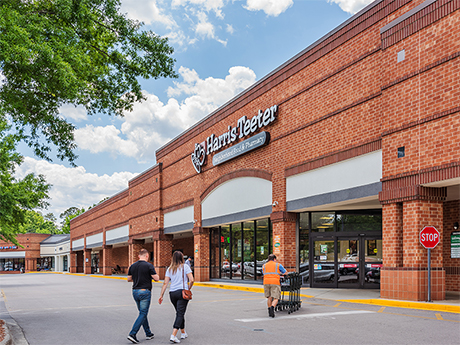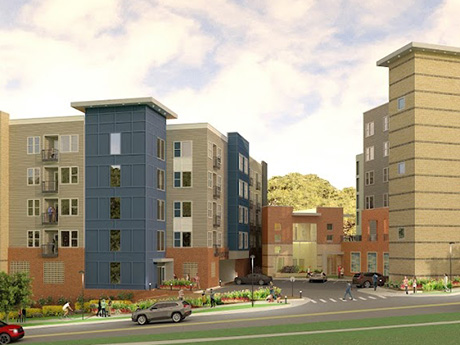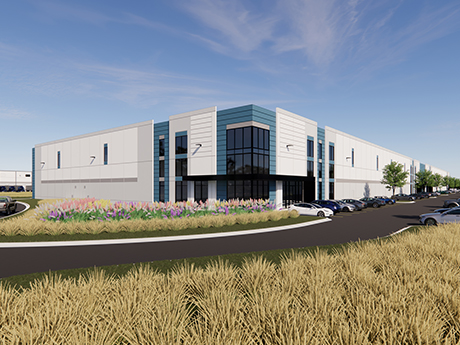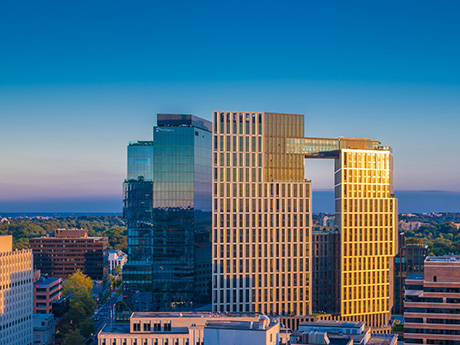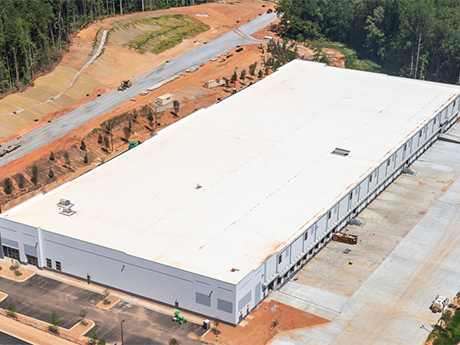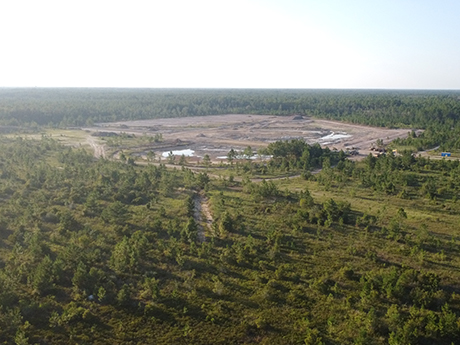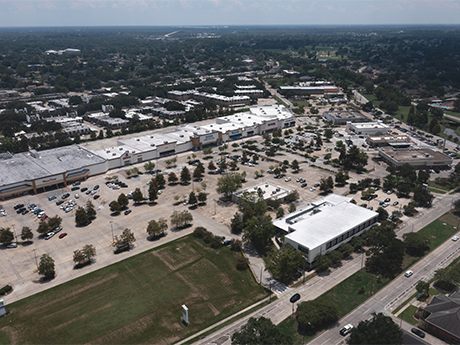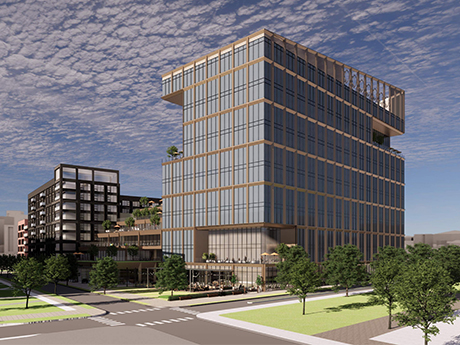By Tom Kolarczyk of JLL The overall U.S. economic slowdown, rising interest rates and the looming threat of inflation had a negative effect on all segments of Raleigh-Durham’s commercial real estate market last year — and retail was no exception. According to JLL research, there were just 11 retail trades over $5 million between January and December, totaling some $131 million in value. This is a notable drop from the 33 transactions recorded in 2022 valued at $582 million. On the flipside, however, fundamentals remained incredibly strong with occupancies ending out the year at the near record-setting level of 98 percent. This led to leasing spreads of anywhere between 20 and 40 percent on new leases and helped flip the tables to favor landlords for the first time in decades, where getting space back is generally a positive. Rents grew 3 to 6 percent in 2023, with an average year-end asking rate of $24.93 per square foot. This represents a year-over-year increase of 6.45 percent from 2022. While about 80 percent of all retail trades last year were acquired through private capital, an increasing number of REITs are becoming more active via mergers and acquisitions and strategic one-off acquisitions and …
Southeast Market Reports
By Lisa Narducci-Nix of Drucker + Falk As a third-party manager of more than 7,000 multifamily units in the Raleigh-Durham metropolitan area, the question we’ve been asked the most lately is, “What do you see for 2024 in terms of rent growth and occupancy?” Alongside other concerning variables such as liability insurance and payroll, rent and occupancy performance seem to be front and center in most conversations. Rents have notably cooled from the unprecedented growth enjoyed most of 2022. According to a multifamily market report on Raleigh by Yardi Matrix, rent growth was negative 0.2 percent in third-quarter 2023 compared to the second quarter and down 1.5 percent on a year-over-year basis. We expect that those numbers represent a market correction of sorts from the unsustainable growth in 2022 as employment and population growth remain strong in the Raleigh-Durham market. In recent headlines, Apple is planning to begin its first phase of its 281-acre office campus, which will add 3,000 jobs at full build-out, and VinFast will begin developing its $4 billion electric vehicle plant in nearby Chatham County in 2025. Additionally, the U.S. Census Bureau found that the population of the Raleigh-Durham MSA grew by 2 percent in 2021 …
By Derek Jacobs of Avison Young Through the financial uncertainty and confusion of the past four years, Raleigh-Durham has stood out as an exemplary industrial market that has strengthened in economic diversity and stability despite greater national and global market trends and challenges. The outlook for Raleigh-Durham is very positive thanks to local and state governments that support business, an excellent central East Coast location and a market environment where industrial demand heavily outweighs supply. Triple-net rents in Raleigh-Durham grew by nearly 39 percent since first-quarter 2020, while total vacancy has remained below 4 percent. The most affordable Class C product has an exceptionally low vacancy rate of 2.7 percent due to lower rent costs outweighing the opportunity costs of moving into a nicer, newer building that will be more expensive in most cases. The newest and most costly Class A industrial product in Raleigh-Durham has also shown strong demand, with a vacancy rate (5.7 percent) lower than the vacancy rate for all industrial product classes combined across the country (6.1 percent). Industrial occupiers and residents in Raleigh-Durham work, do business in various industries and provide services that supply further market growth. Around half of the industrial property in Raleigh-Durham …
While there has been a discernible dip in the volume of industrial leasing activity occurring in the greater Baltimore metropolitan area this past year, optimism remains high among owners and investors of this asset class given the diminishing volume of new product under construction, the still low 7.4 percent overall vacancy rate, record high — yet stabilizing — average asking rents of $10.54 per square foot net and the fact that 10 million people are not likely to soon move away from the Baltimore-Washington, D.C. corridor, the fourth-largest combined metropolitan statistical area in the country. Oh yes, spirits remain high following the Baltimore Orioles’ underdog ride to the top of the American East standings this summer. Never underestimate the power of a professional sports franchise to energize an entire region. The metro Baltimore industrial market consists of more than 3,600 buildings, totaling more than 266 million square feet of space that includes flex and industrial Class A, B and C buildings. Year-to-date, the market has yielded negative absorption of approximately 1 million square feet of space, including nearly 300,000 square feet this past quarter. The bad news of GXO Logistics shuttering a 571,000-square-foot distribution center in Harford County and laying …
The Washington, D.C., metro area, known for its steady and stable economic foundation, stands at the forefront of a transformative period in the U.S. commercial real estate market. Amid the backdrop of an evolving macroeconomic market, it’s essential to recognize the adaptability and resilience of the metro D.C. area’s multifamily market. While recent capital market fluctuations continue to impact asset pricing across multiple sectors, the region’s fundamentals and property level performance have remained strong. According to Berkadia’s third-quarter multifamily market report, rent is up 3.6 percent in the District. Many properties are experiencing strong rent growth, which is anticipated to continue as there is a complete lack of future supply and the bulk of the apartment supply has delivered and is currently in lease-up. While some regions have headwinds that are cause for some investor caution, particularly regarding regulatory concerns, other areas like Northern Virginia are capturing significant interest from buyers and showcasing the region’s ability to still command buyer demand. This is, in many ways, the recurring narrative for the D.C. metro region: resilience supported by concrete fundamentals. Strong foundation In the D.C. metro area, the decline in supply is highly likely to continue to drive a noteworthy increase …
Atlanta’s industrial sector and its historically strong performance have fortified the city as a strategic Southeast location and gateway market nationwide. Activity, which has decreased since peak demand during the COVID-19 pandemic, is now returning to normalized levels. The net new requirement pipeline remains robust primarily due to the influx of manufacturing, advanced manufacturing, life sciences, automotive, alternative energy and data center projects. How owners and tenants invest in industrial properties has also shifted. Owners are seeking properties with short weighted average lease terms and investments below replacement cost. Meanwhile, occupiers are making moves to crisis-proof their networks with onshoring and nearshoring of production that was previously conducted overseas, and they’re adjusting their overall supply chain and logistics strategies to diversify and avoid dependence on one region or vendor. Players in the market remain cautiously optimistic, which has subdued demand, but that is expected to be short-lived once macro-economic conditions stabilize. High inflation and rising interest rates over the past 12 to 18 months have significantly contributed to decreased demand in Atlanta. However, with continued population growth and Atlanta’s central location in the Southeast, the metro area’s compressed demand will be short-lived. With that said, Atlanta’s industrial market remains strong …
In recent years, Atlanta has become a top choice for corporate relocations, causing double-digit multifamily rental rate growth, an increase in pricing and a general benefit to the industry as a whole. In 2021, rental rates rose at an average of 11.7 percent and last year that number reached 16.8 percent. As a result, from 2021 through much of 2022 the metropolitan area experienced a record amount of investment activity, with $20.8 billion and $14.8 billion trading hands, respectively. During the first six months of 2023, however, transaction activity slowed and began returning to more typical levels, dropping approximately 82 percent year-over-year from those highs. Much of the decline in transaction activity experienced today can be accredited to the Federal Reserve’s sizable interest rate hikes over the past 18 months, resulting in a significant expansion in cap rates and a divide between buyer and seller pricing expectations. During the first half of 2023, approximately 54 transactions occurred, compared to 172 recorded for the same period last year for assets valued at $5 million or more. Much of this activity was driven by smaller deal sizes and private capital as institutional investors embrace a “wait and see” agenda in hopes of …
For the past decade, the inventory of industrial space in the Greater New Orleans market has not been large enough to meet demand. Comprising mostly older product that would be considered Class B or C in more populous markets, New Orleans-area warehouses have an overall vacancy rate of less than 2 percent. The demand has resulted in rising rental rates. Development of new product is warranted, but a combination of factors has prevented new projects from being built. Finally, in 2023, despite increased construction costs, high insurance costs and rising interest rates, projects are underway that will accommodate the demand in a market that is long overdue for new, modern warehouse product. Despite having all the ingredients to be a major industrial market, including one of the country’s largest port systems, warehouse infrastructure in New Orleans is dated, mostly due to a lack of suitable land for development. Institutional ownership and investment here is limited to select groups that, while chasing higher yields, took the time to learn the market’s dynamics and build local relationships. Historically, as brokers and tenants bemoaned a lack of product, national developers were reluctant to deploy capital to speculate in an unfamiliar and unproven locale. …
The New Orleans retail market is in a state of flux like other markets across the country. The retail experience is changing for the end user, with an increase in online shopping, “try before you buy” customers and quicker walkthroughs. Retailers are left in an odd position, caught between experiential interactions with customers and trying to have them remember to purchase later at home. While the retail market is changing, the Greater New Orleans area is different due to the scarcity of space available for new construction and a stable flow of stores closing or relocating. Our market creates a streamlined experience where consumers have “retail corners” they can visit to shop — such as downtown New Orleans, especially the iconic streets of Canal and Magazine — but also the suburbs that include Metairie, Elmwood and the Westbank. With the concentrated shopping setup of the market, customers can shop more efficiently, and retail investors see the New Orleans market as a more demanding and creative place to build and open stores. Submarket by submarket The retail customer in New Orleans detests spending unneeded time in the car, so when customers can shop locally, get what they need and get it …
Shell’s announcement in mid-September to relocate its home from the Central Business District (CBD) of New Orleans to the planned 50-plus acre River District rocked the office market. The oil and gas giant has been in the Hancock Whitney Center (formerly One Shell Square) since 1972, and will be rightsizing in a Class A mid-rise office building that will anchor the River District. The planned building will be approximately 142,000 square feet and home to 850 to 1,000 employees. What a huge win for the planned River District and city of New Orleans. However, the void left in Hancock Whitney Center raises the question, what will building ownership group do with all of the space that Shell vacates? If the current occupancy rate stands, Hancock Whitney Center will have over 500,000 square feet of vacant space. Elsewhere, Entergy is in the process of a major contraction in its building located at 639 Loyola Ave., and earlier this year, Freeport McMoRan vacated over 100,000 square feet of space at 1615 Poydras. Both buildings are also located in the CBD. A number of office towers have loans maturing within the next 24 months, and the logical assumption is that securing financing will …


